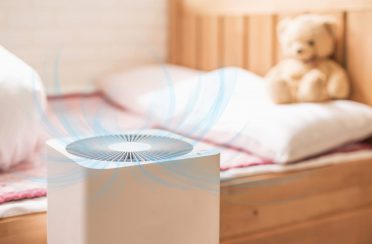 Heat recovery ventilators are installed in residential homes as part of new code requirements.
Heat recovery ventilators are installed in residential homes as part of new code requirements.
They function as part of the home’s ventilation system and are intended for ventilation only. However, there is sometimes a misconception around what they can do and can leave a homeowner feeling confused and unsure of what to expect when they have one installed. Read on for answers to common questions about HRVs.
Does an HRV remove humidity?
A heat recovery ventilator is part of your home’s ventilation system. It does not reduce humidity levels and can actually increase the humidity in your home.
How does it increase humidity in your home?
As a ventilation device an HRV moves air. It moves air from inside your home to the outside and vice versa. Often the humidity levels are different between the interior of your home and the outside environment. On warm days we could experience high relative humidity outside and we bring that air inside. On extremely cold days there is less humidity outside and naturally more inside. When a homeowner is experiencing high humidity they may assume there is something wrong with the ventilation equipment but that isn’t always the case. It is important to understand that the HRV equipment is performing properly and is not intended for dehumidification. Other factors may be impacting humidity levels.
What are the other factors that can impact humidity levels?
Generally, it is the home occupants’ lifestyle that impacts humidity in the home. A large number of houseplants, fish aquariums, cooking, showers and bathing all add humidity inside a home.
What can homeowners do to decrease humidity levels in their home on their own?
Running your bath fan during and 15 minutes after you take a bath or shower will remove that moist air. If using an HRV in place of bath fans, running your HRV during and 60 minutes after you bathe or shower increases ventilation so it is removing humid air and replacing it with less humid air.
How can Arpi’s help decrease humidity levels in a home?
Dehumidifiers are available and are installed in very specific situations.
Often a homeowner will believe they have high humidity when windows fog up or have ice buildup on them. The humidity in your home could very well be at the correct level when this happens. Other issues may be at play here such as the age and quality of the window, the window seal itself, and air circulation around the window, etc.
The best solution for condensation and ice on windows in our cold weather is to open your blinds and curtains and get as much air circulation as you can on that window. Always run your bath fans when taking a bath or shower. Run your range hood when cooking. Turn your ceiling fan on low to gently “wash” your windows with air to keep them warmer. All of these tactics will help in keeping those windows clear.
You can certainly turn down the humidity in your home to combat condensation and ice on your windows, however keep in mind that the humidity level may be better for your windows but not optimal for you and your family.
If you have concerns about ventilation or rising humidity levels in your home and you would like recommendations, call Arpi’s and one of our folks would be happy to help you.

